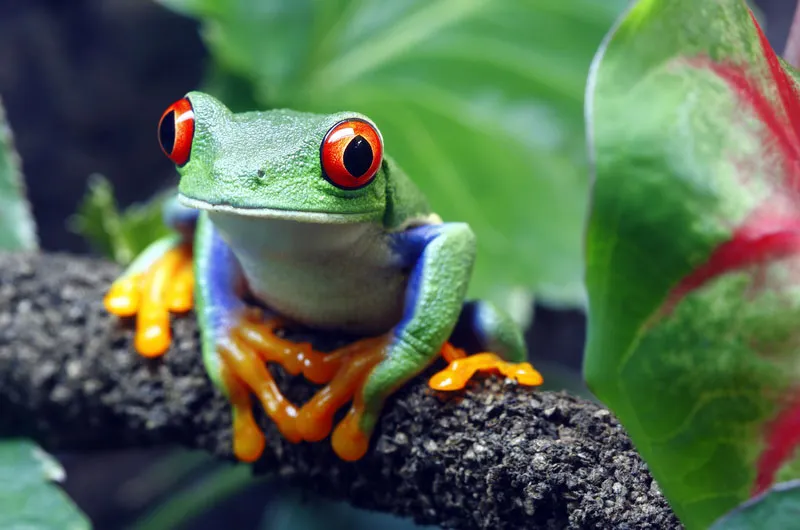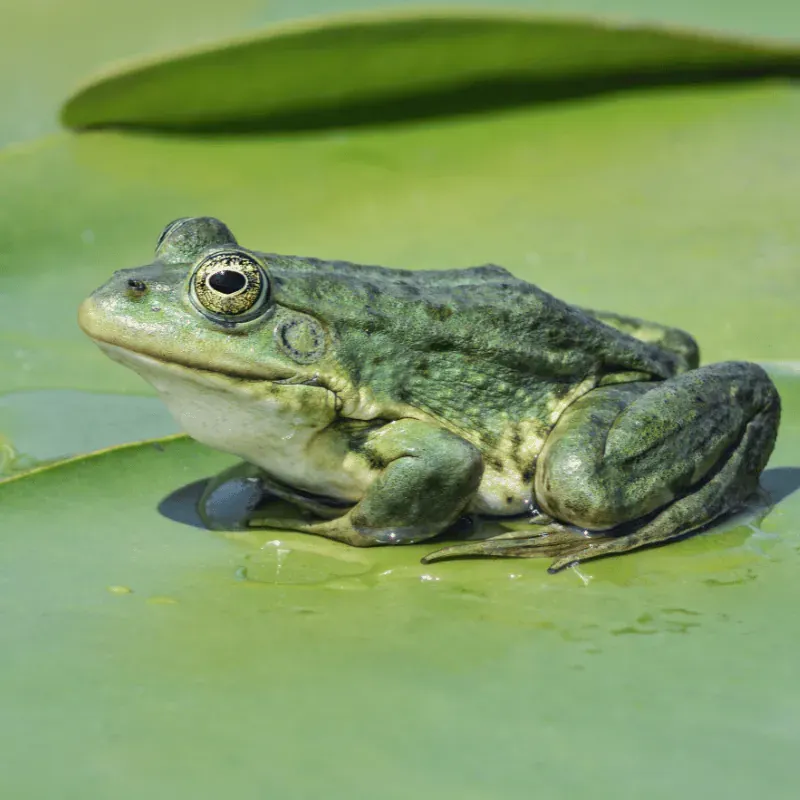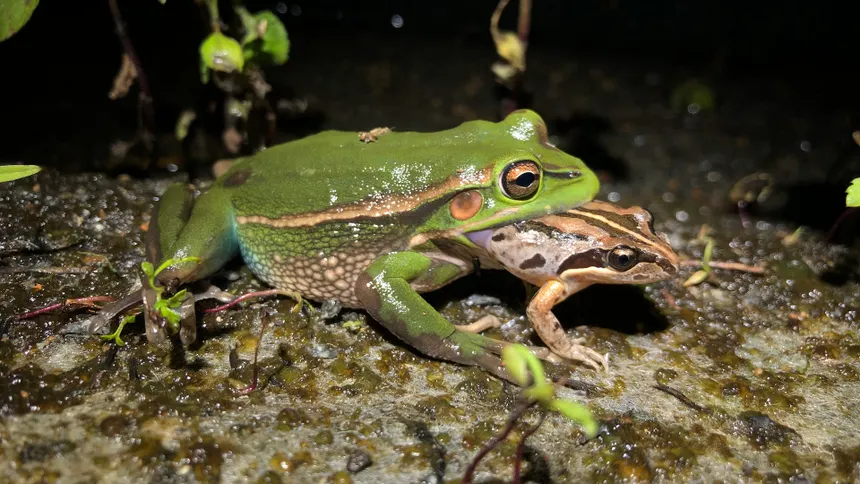Facts about Frog

Frogs are among the most diverse and widespread amphibians on Earth. With their distinct croaks, powerful legs, and slimy skin, they play vital roles in ecosystems and cultures across the world. This article dives into the captivating world of frogs, exploring their biology, behavior, habitats, survival adaptations, and the surprising variety that exists within this ancient group of animals.
What Are Frogs?
- Classification: Amphibians (Class: Amphibia, Order: Anura)
- Number of Species: Over 7,500 known species globally
- Evolutionary History: Frogs have existed for more than 200 million years, making them some of the earliest vertebrates to colonize land and water.
Anatomy and Adaptations
- Skin: Frogs have permeable skin, which allows them to breathe and absorb water directly through it. This makes them highly sensitive to environmental changes and pollution.
- Legs: Most frogs have long, muscular hind legs designed for jumping and swimming. Tree frogs have sticky toe pads to grip branches, while burrowing frogs have strong limbs for digging.
- Eyes and Vision: Large, bulging eyes give frogs a wide field of vision, essential for spotting predators and prey. Some species can see in color at night.
- Tongue: Frogs have a sticky, retractable tongue that they use to catch prey with lightning speed.
- Ears: Frogs don’t have external ears but have tympanic membranes that help them hear both in air and underwater.
Life Cycle
Frogs undergo metamorphosis:
- Egg – Laid in water or moist environments
- Tadpole – Aquatic and gilled, feeding on algae
- Tadpole with legs – Begins developing lungs
- Froglet – Almost fully formed with a tail
- Adult Frog – Fully terrestrial or semi-aquatic
This remarkable transformation showcases their amphibious nature.
Where Do Frogs Live?
- Frogs are found on every continent except Antarctica.
- Most species live in moist environments, such as rainforests, swamps, ponds, lakes, and marshes.
- Some species have adapted to deserts, arctic tundra, or mountaintops.
- Tropical regions host the greatest diversity of frog species.

Diet and Feeding
- Carnivorous: Frogs are meat-eaters, feeding on insects, spiders, worms, small fish, and even smaller frogs.
- Ambush predators: They sit still and wait for prey to come close, then snatch it up with a flick of their sticky tongue.
- Tadpoles, on the other hand, are mostly herbivores or detritivores, feeding on algae and organic debris.
Sounds and Communication
- Croaking: Only male frogs typically croak, mainly to attract mates or establish territory.
- Each species has a unique call, and some are loud enough to be heard over half a mile away.
- Frogs also communicate through body language, such as foot-waving and inflating vocal sacs.
Incredible Frog Facts
- Glass frogs have translucent skin—you can see their internal organs!
- Poison dart frogs carry enough toxins to kill 10 adult humans.
- The wood frog can freeze solid in winter and thaw out alive in spring.
- Goliath frogs from Africa can grow over 13 inches (33 cm) long and weigh over 7 pounds (3 kg).
- Frogs can breathe through their skin as well as their lungs.
- Some frogs give birth to live young, skipping the tadpole stage entirely.
- The hairy frog breaks its bones to form claws when threatened.
- Frogs have no ribs—their skeletal structure is designed for leaping.
- A group of frogs is called an army.
- Frogs shed their skin regularly—and then often eat it.
Threats to Frogs
Frogs are among the most endangered animal groups due to:
- Habitat loss from agriculture, urbanization, and deforestation
- Climate change, which affects their breeding cycles and habitats
- Pollution, especially pesticides and fertilizers
- Chytrid fungus, a deadly disease spreading worldwide
- Invasive species and over-collection for the pet and food trade
More than 30% of all frog species are at risk of extinction.
Frogs and Human Culture
- Symbols of transformation and rebirth in many mythologies
- Used in medical research due to their permeable skin and regenerative abilities
- Popular in fairy tales and folklore, often linked to rain, fertility, or magic
- Featured in pop culture, from Kermit the Frog to ancient Egyptian hieroglyphs
Conservation Efforts
Numerous organizations are working to protect frogs through:
- Captive breeding and reintroduction programs
- Habitat restoration
- Education and awareness
- Legislation and global conservation networks
Programs like “Amphibian Ark” aim to safeguard the world’s most threatened species.

Conclusion
Frogs are not only ecologically essential but also fascinating creatures with a wide array of adaptations, behaviors, and life strategies. Whether singing through the night, changing colors, or leaping astonishing distances, frogs continue to amaze scientists and nature lovers alike. As indicators of environmental health, their well-being reflects the state of the planet—and preserving them helps preserve biodiversity for generations to come.



